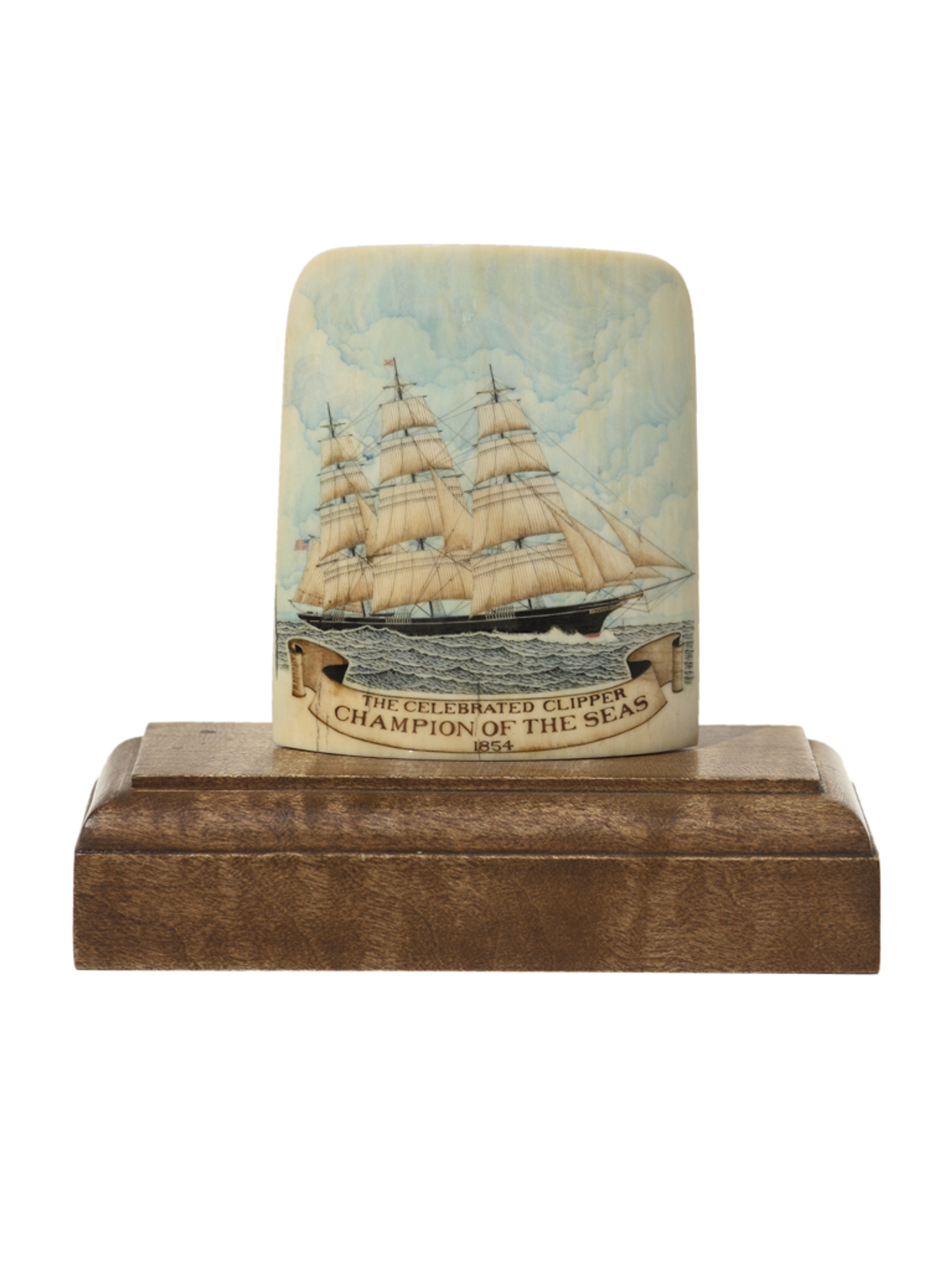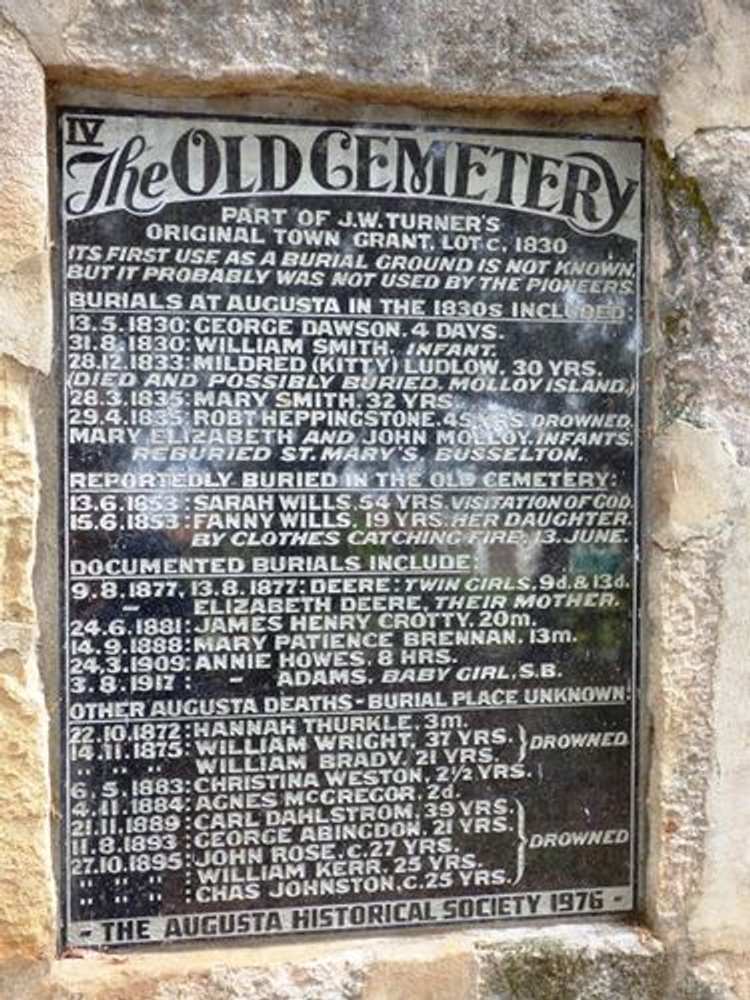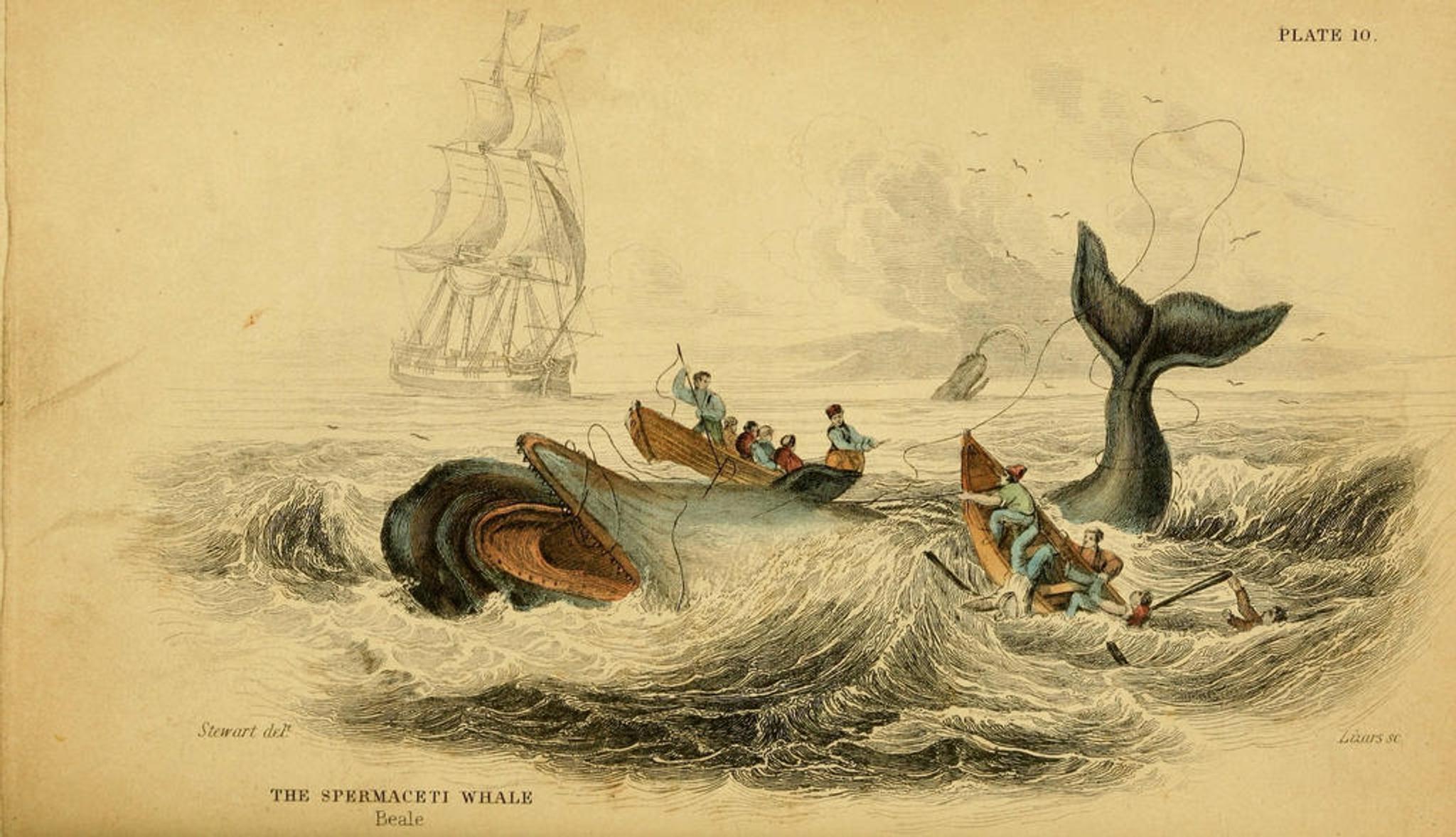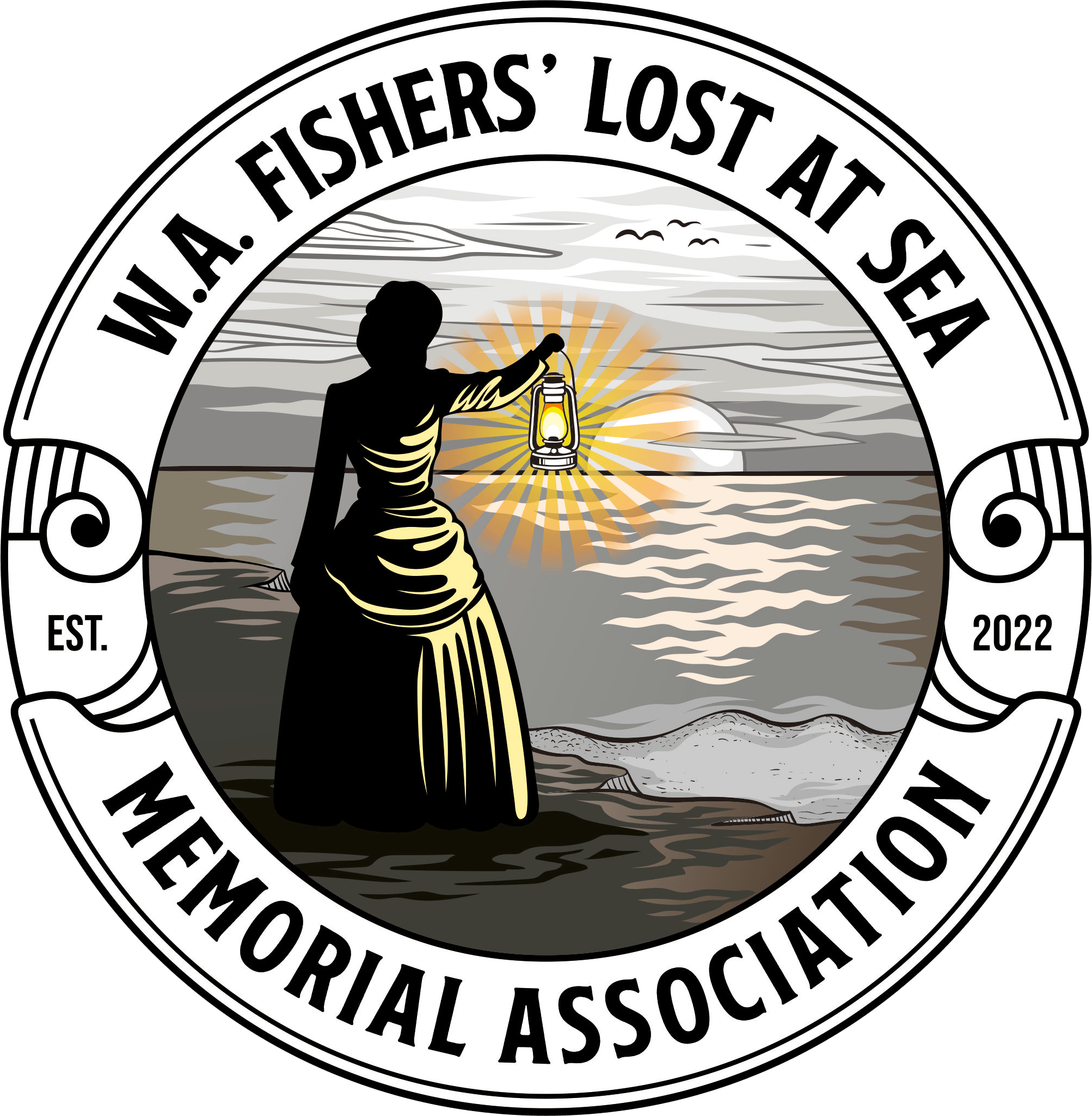Robert Heppingstone
Vessel Name: Champion
Robert Heppingstone
Drowned; body recovered
6 September 1845

Painting of Champion on ivory.

Old Augusta Cemetery board

Champion whaling at Hawaii 1850. Painting from The Polynesia
Robert Heppingstone (Senior) emigrated to Western Australia as free settlers from England via the Warrior with his wife Anne and children, Robert, Charlotte, Ellen and Ann. The family are represented on a brick in the Western Australian Museum Welcome Walls in Fremantle.
Robert Heppingstone was born in Derbyshire, England in 1821. He worked on the family farm, but had his heart set on owning his own ship. Various family members operated whaleships out of Fremantle, and Robert’s dream of going to sea was realised through his own hard work and family connections.
Robert married Mary Ann Layman at Vasse in 1842. Mary Ann was the widow of a seaman with two children. They had two sons together; Arthur in 1842 and Robert John in 1845. Mary Ann managed their property, which included a farm Robert purchased after they were married. Robert’s sister Ellen married neighbouring farmer Alfred Bussell in 1850 when she was 16 years of age.
Robert voyaged aboard the whaleship Emily Taylor, working his way up to First Mate. He took command of her when he qualified as a master, and started bay whaling out of Geographe Bay.
By 1845 Robert had established the Castle Rock Whaling Company in Geographe Bay. He was 24 years old. The Dunsborough settlement developed around the whaling company and the trade and people it brought to the area. John Bateman, invested in the whaling company. He had built a shipping and merchant business, but never forgot how much he enjoyed his first job on an ocean-going whale ship.
By 1846 Robert was a part owner and commander of the whaleship Champion. She was a 326 ton barque with a white oak hull and copper and iron fastenings. She had three masts and a single deck. She was 106.3 feet long and 26.7 feet across her beam. She drew 15 feet of water. She was part of the American whaling fleet before whaling in Australian waters under Robert's command.
The Champion’s crew worked in various jobs between the whaling seasons. Annual whaling seasons began between June and August each year and continued through into late in November. Some of the crew did scrimshaw and ivory painting for trade or sale. Robert took Champion trading. She carried timber and sandalwood from Vasse to the east coast, overseas to Singapore and as far afield as Hawaii.
Whaling vessels anchored in Geographe Bay. Their whalechasers glided backwards and forwards to shore, rowed by stalwart seamen. A watchman stood at the top of a nearby hill hundreds of feet above the sea. His voice echoed down the hill when a whale was sighted signalling to Robert and other steersmen to launch their boats direct their crews to pull towards the whale’s spout.
On 6 September 1858, when Robert was 45 years of age, he was at the tiller of his whaleboat with a small crew. They were pulling for home, returning from the Champion, approximately three miles. The wind was gaining, and the ocean was heavy, rolling towards the shore.
The chief headsman saw the whaleboat fighting the wind and waves and he called all hands to the beach, ready to launch their boats. It seemed inevitable that Robert’s boat would overturn or be swamped before it reached the shore.
It was hit by a wave that threw Robert across the boat. Before he could recover his position, a second wave struck the little boat and upended it. The crew were thrown into the heaving sea.
The chief headsman launched all the whaleboats available, and he urged them to pull as hard as they could towards the upturned boat. As the tide was running, they had to pull past the men in the water and turn to come back down on them. The crew was picked up safely, but Robert was missing.
The boats cast about searching for Robert, struggling against the increasing wind. It wasn’t long before his body was found. He had drowned.
Robert was buried in the Augusta Cemetery with his parents and other family members. He left his wife and children to mourn for him. They inherited his estate.
The Champion was taken over by Captain Daniel Scott. He was a prominent figure in early Western Australian maritime history and played a key role in the development of Fremantle’s port infrastructure. He operated the Champion as part of his shipping and whaling ventures along the coast.
A stone cairn marks the original site of the whaling station. The site is recognized for its historical significance as part of one of the earliest industries in the Swan River Colony.
